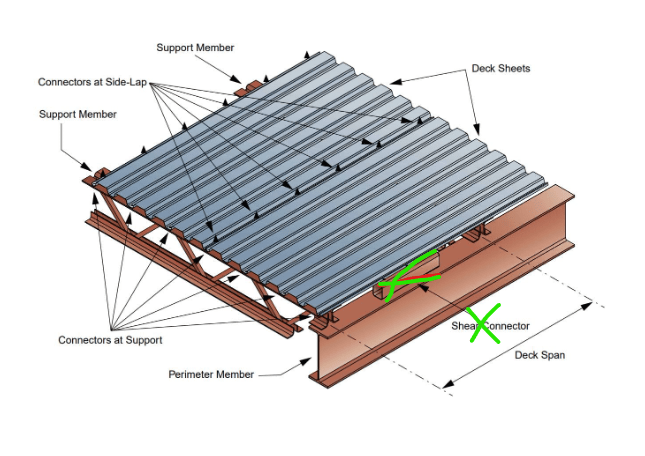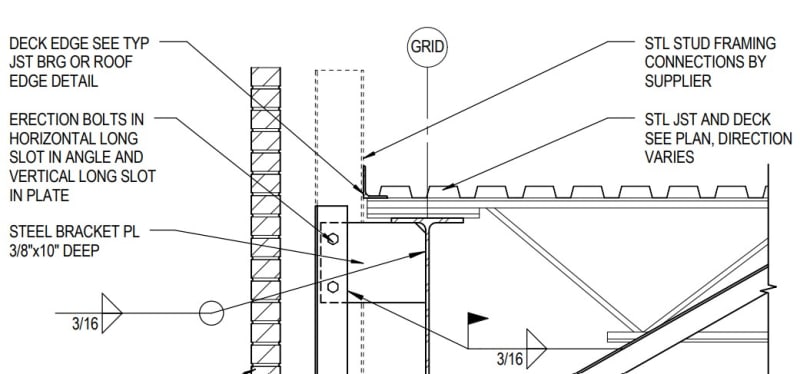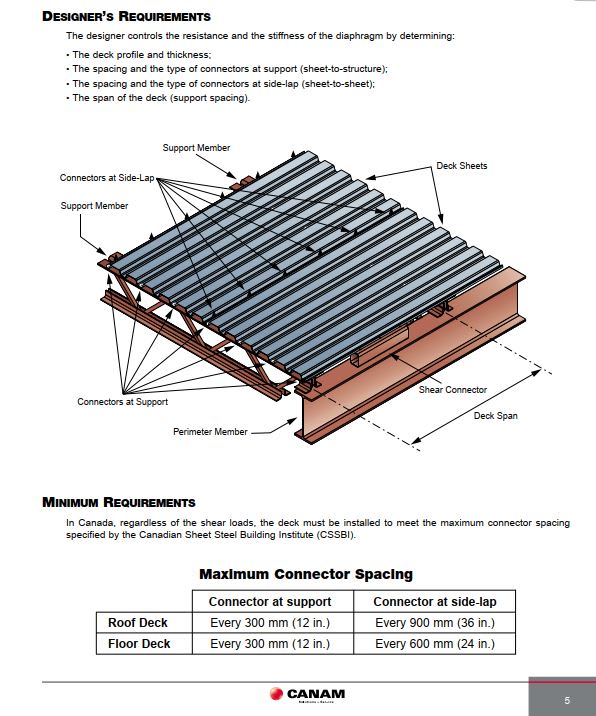In the below image, imagine the steel beam aligns with the end of the roof deck. Do I need to provide a continuous angle, welded to the top of each joist, such to attach the metal deck to?
I have seen countless times when engineers do not provide an angle here to support the deck edge.
WHen I look at the SDI specifications, it reads, "Minimum edge attachment - Fasten perimeter edges of deck units at 36" maximum intervals or as shown on design drawings for diaphragm design."
Is SDI referring to the same thing that I am referring to?

I have seen countless times when engineers do not provide an angle here to support the deck edge.
WHen I look at the SDI specifications, it reads, "Minimum edge attachment - Fasten perimeter edges of deck units at 36" maximum intervals or as shown on design drawings for diaphragm design."
Is SDI referring to the same thing that I am referring to?



